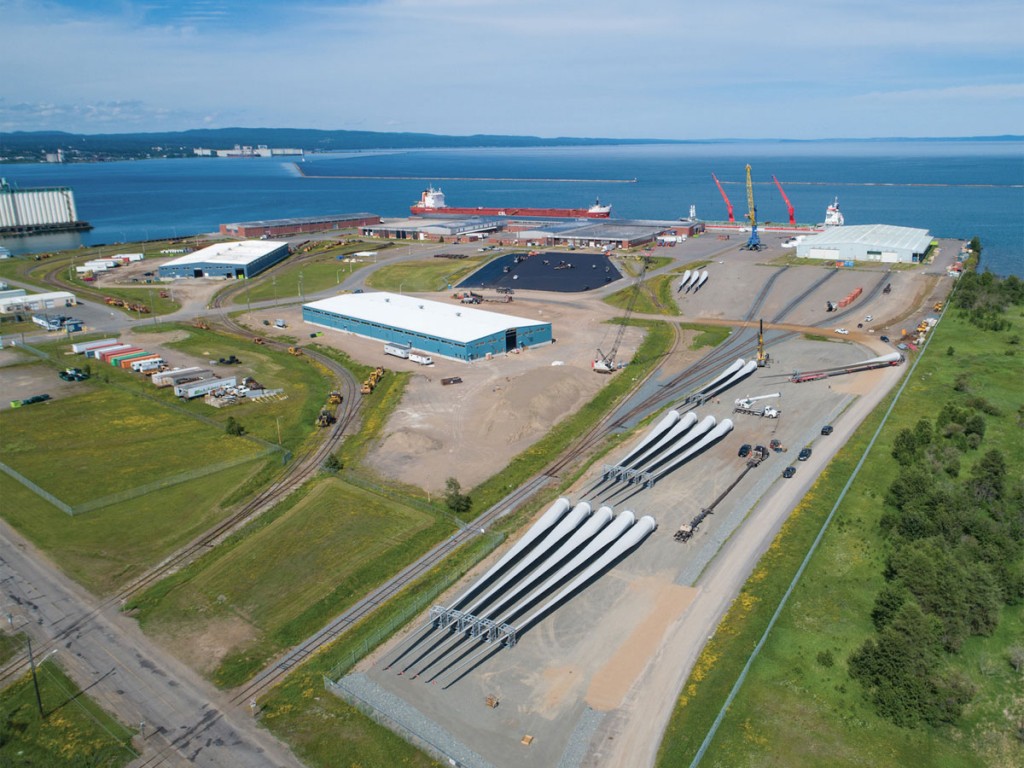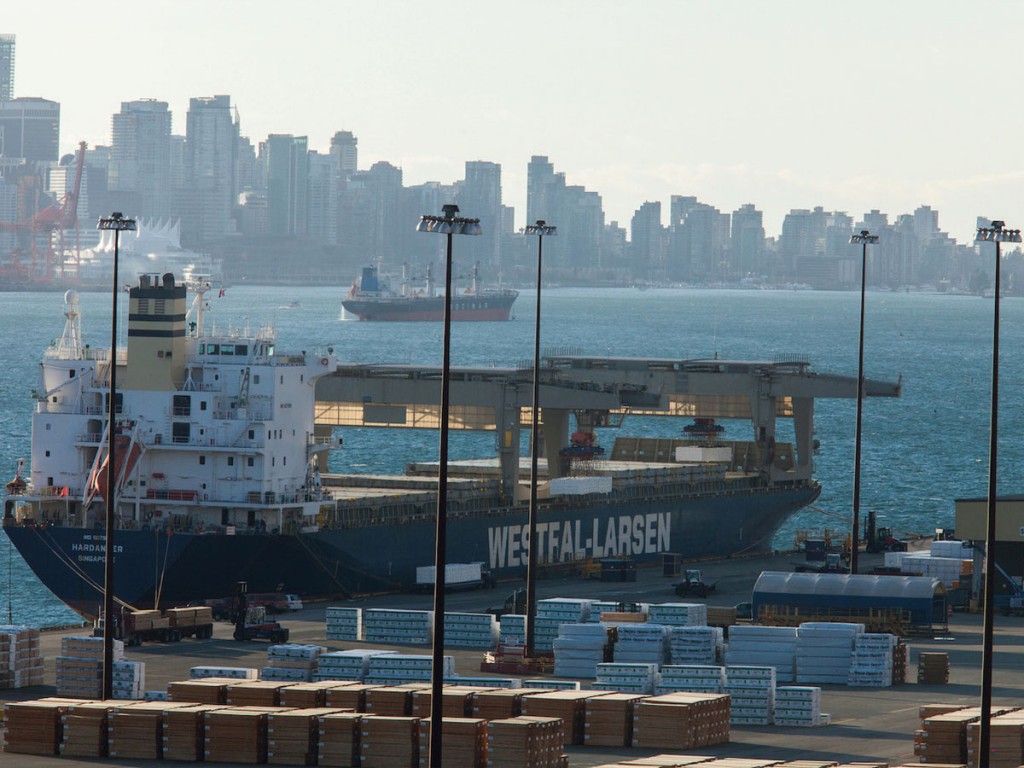Renewables key component to Canada’s “Green Recovery”
Against the backdrop of a federal Liberal government headed by Prime Minister Justin Trudeau committing billions of dollars to drive a “green recovery” from the pandemic-induced economic slowdown, there is much optimism in the renewable energy industry in Canada on the outlook for continuing strong shipments of wind farm components. At the same time, the trend looks solid for breakbulk and heavy lift as, among other things, even demand for equipment has been growing from the struggling Alberta oil sands sector thanks to rising oil prices.
Interviewed by the American Journal of Transportation, Tim Heney, the port’s chief executive, said “we are seeing higher volumes of rail and structural steel this year. The structural steel is a good indicator of economic recovery in Western Canada.
“With oil prices rising, benefiting the oilsands producers, transformers and other equipment are moving through Thunder Bay. In short, it looks like an excellent year for project and breakbulk cargo.”

Renewables
Recently predicting a bright future for renewable energy in Canada was the Canadian Renewable Energy Association (CanREA). “Despite considerable challenges posed by the global pandemic, Canada ended 2020 with a total wind capacity of 13,588 MW, a total solar capacity of approximately 3,000 MW, significant growth in energy storage and a positive forecast for 2021,” said CanREA President Robert Horning. (see Leo Ryan, Wind cargo growing at U.S. Great Lakes ports on page 15).
The capacity of Canadian wind energy projects slated for construction in 2021 is listed as 745 MW. Ontario and Quebec account for more than 9,000 MW of installed capacity. However, Alberta, third with 1,700 MW, is forecast by Norway’s Rystad Energy consultancy to emerge as the leader among Canadian provinces in utility-scale wind and solar assets as early as 2025.
Worthy of note is what is known as the Emerging Renewable Power Program under which the federal government provides up to C$200 million to expand the commercially viable renewable energy sources available to provinces and territories as they work to reduce GHG emissions from their electricity grids.

Bullish Trends on St. Lawrence Seaway
Regarding project cargo and wind shipments in 2021 on the St. Lawrence Seaway, Bruce Hodgson, director of market development of Canada’s St. Lawrence Seaway Management Corporation sees a robust trend continuing after this growing niche cargo doubled to 200,000 metric tons in 2020 from the previous year.
The 2020 season, he said, witnessed equipment shipped “not just within the Great Lakes region, but in some cases, much farther inland than the system’s 3,700-kilometer marine highway.”
Summing up, Hodgson noted: “Thunder Bay handled vessels of wind equipment for wind projects in Western Canada, one arriving with equipment from Germany and another from Spain. Duluth, along with Ogdensburg, Buffalo, Erie, Monroe, Bay City, Burns Harbor, Chicago and Menominee also handled wind project cargo shipments which originated from Spain, South Korea and Germany.”
Among Canadian Great Lakes ports, a big move handled by the Hamilton Oshawa Port Authority ( HOPA) in 2020 was the shipment of a set of oversized power generation modules, manufactured in southern Ontario. A spectacular convoy journey to the Port of Hamilton led by Precision Specialized lasted several days. The modules were then loaded onto the BBC Eagle at Federal Marine Terminals’ Hamilton port facility before departing for France.
“HOPA and its partners are looking forward to more heavy lift shipments in 2021, with new capacity in HOPA’s extended network in Oshawa and Niagara,” said Larissa Fenn, director of public affairs. “A newly-expanded facility at FMT in Hamilton offers improved docking and additional laydown area to accommodate more project cargo.
Late in 2020, the Port of Toronto was the recipient of another striking project move: the delivery of the first of four new bridge spans that will connect Villiers Island to Toronto and the revitalized Port Lands. Manufactured by Cherubini steel fabricators, the 57-metre, 340-tonne bridge was transported on its long journey from Dartmouth, Nova Scotia aboard McKeil Marine’s tug and barge, the Louis M and Glovertown Spirit. Three more bridge loads are due to be completed during the 2021 Seaway navigation season.
On Canada’s West Coast
The Port of Vancouver serves as the Pacific Northwest’s major consolidation centre for breakbulk cargo such as forest products, steel and machinery. In 2020, breakbulk traffic at Canada’s largest port amounted to 17 million metric tons.
Breakbulk cargo is handled through one of two terminals at the port which offer competitive service for project cargo destined for western Canadian resource projects. DP World Fraser Surrey is a multi-purpose terminal handling containers and various breakbulk commodities. Lynnterm in North Vancouver is the consolidation centre for forest products and steel.
The port offers easy access to extensive road connections, as well as established corridors for overweight and over dimensional project cargoes.
CN and CP railways service on-dock rail facilities at all 29 terminals and provide service to key destinations across North America. BNSF and Southern Railway of British Columbia (SRY) links further enhance these networks.



